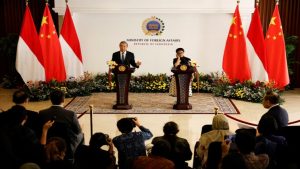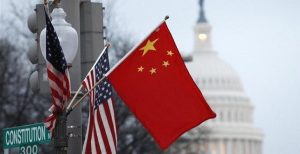The livelihoods of Chinese people has been secured by the Chinese government during the past year despite the impact the COVID-19 epidemic has caused.
The goals set in last year’s Government Work Report have fulfilled and the indicators of people’s wellbeing have improved steadily.
As promised, China achieved the goals of winning the battle against poverty and completing the building of a moderately prosperous society in all respects in 2020.
By November 23, 2020, China had removed all its 832 impoverished counties nationwide from the poverty list, a globally significant milestone in poverty reduction for the world’s most populous country.
“In less than ten years, the government has lifted our over 90 million poverty-stricken population from many counties — hundreds, or even thousands of counties, out of poverty. Not a single person was left behind. I feel it is such a grant achievement,” said Xie Xingchang, a villager from once-impoverished Yongning County, northwest China’s Ningxia Region.
By the end of 2020, a total of 19.36 million registered people had been included in the subsistence allowance, support and relief system.
After the outbreak of COVID-19 last year, China’s health authorities adjusted medical insurance policies to enable COVID-19 patients to get treatment with delayed settlement of accounts.
Last November, the country completed its initial round of government centralised procurement programme for high-value medical commodities.
The 10 varieties of coronary stents that were successful following bidding saw their average price down to around 700 yuan (about 108 US dollars) from about 13 000 yuan (about 2,006 US dollars).
“To purchase high-value consumable materials and medicines through centralized procurement, especially for high-value medical products like coronary stent, in my opinion, is a major initiative of our nation to solve the difficulties for our people in getting medical service and reducing medical treatment costs,” said Li Lang, deputy director of the First Affiliated Hospital of Guangxi Medical University.
In addition, China had been running at full tilt to foster a social environment in which senior citizens are respected, cared for and live happily in the span of the 13th Five-Year Plan (2016-2020), given the country’s fast-growing aging population.
The basic pension for retirees and the minimum basic old-age pension for rural and non-working urban residents had increased for the 16th time last year, and the country had pledged to ensure the payments of pension funds on time and in full.
More support has been provided for elderly people with special needs, with elderly care service facilities being further developed.
By the end of 2020, elderly care service institutions and facilities in China had offered over 8.23 million beds for senior citizens, which was a year-on-year growth of 7.3 percent.
Elderly care personnel have increased and better trained to provide customized services to senior residents.
“I’m 85 years old now. The caretakers come to visit me twice a week to clean my house, comb my hair, cook for me and talk with me. They have taken care of me just like my daughter,” said Busala Avit, a senior resident from the Kashgar City, northwest China’s Xinjiang Uygur Autonomous Region.






